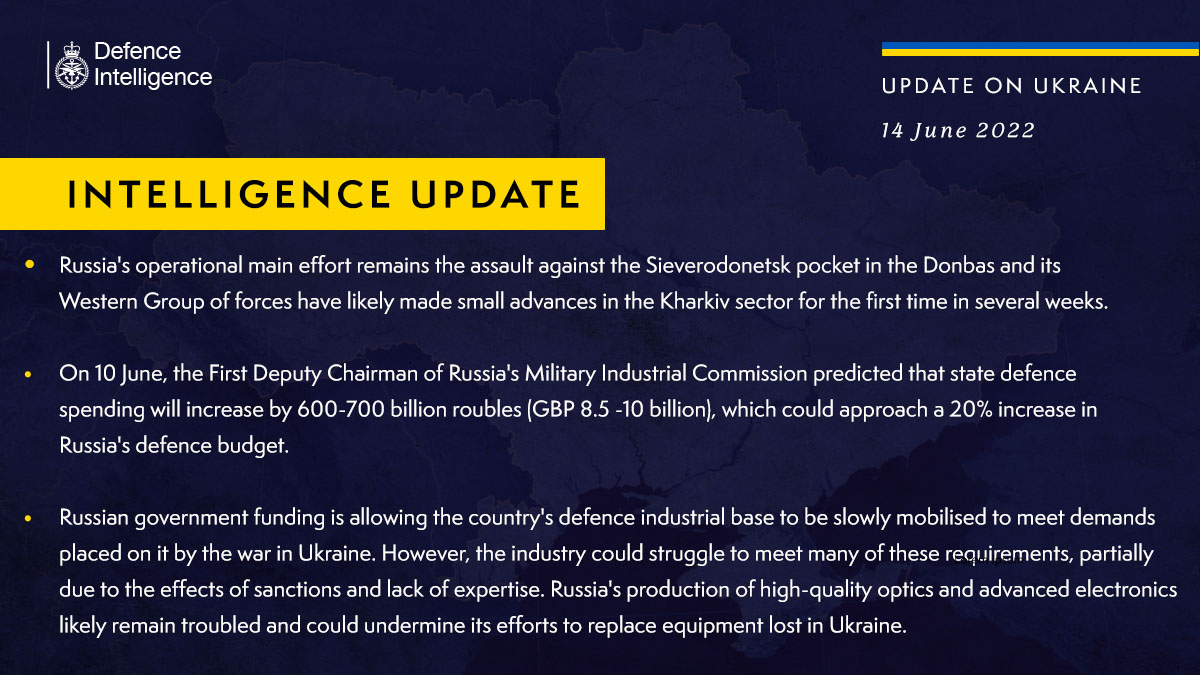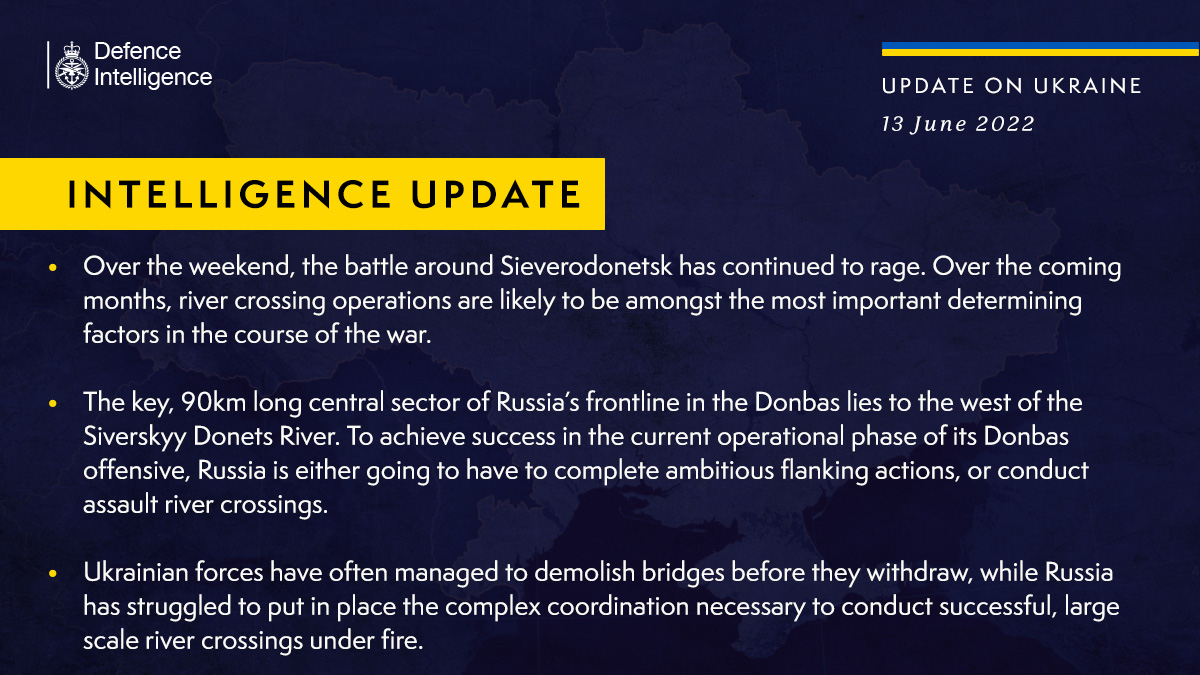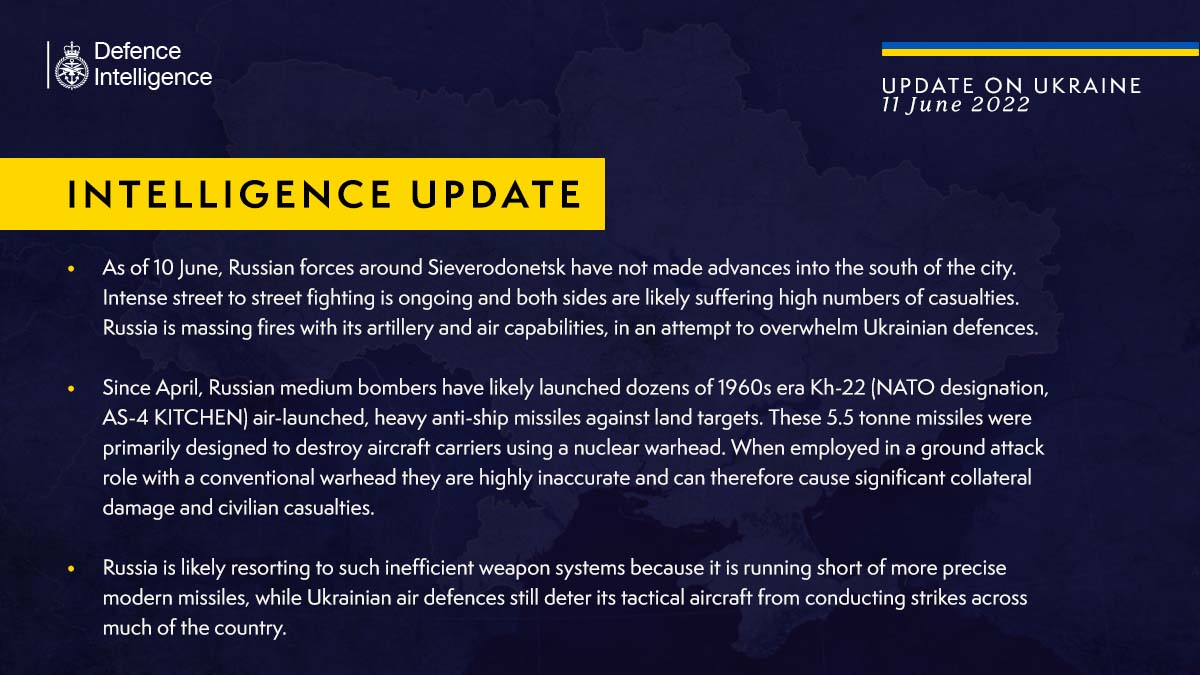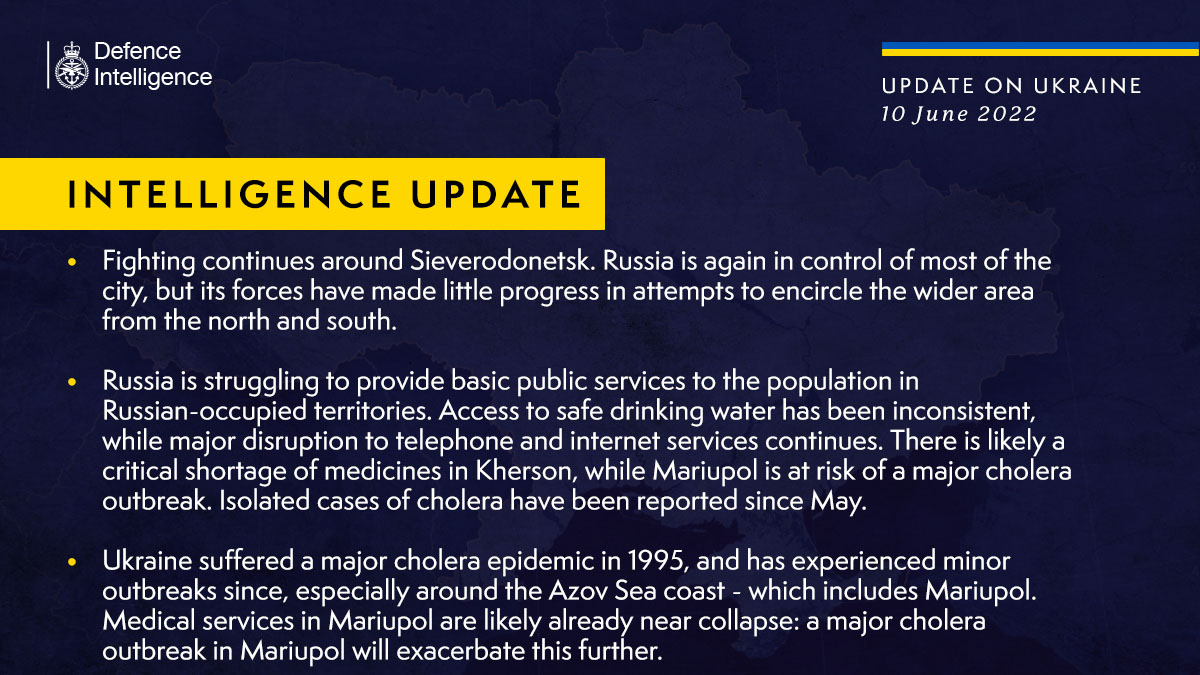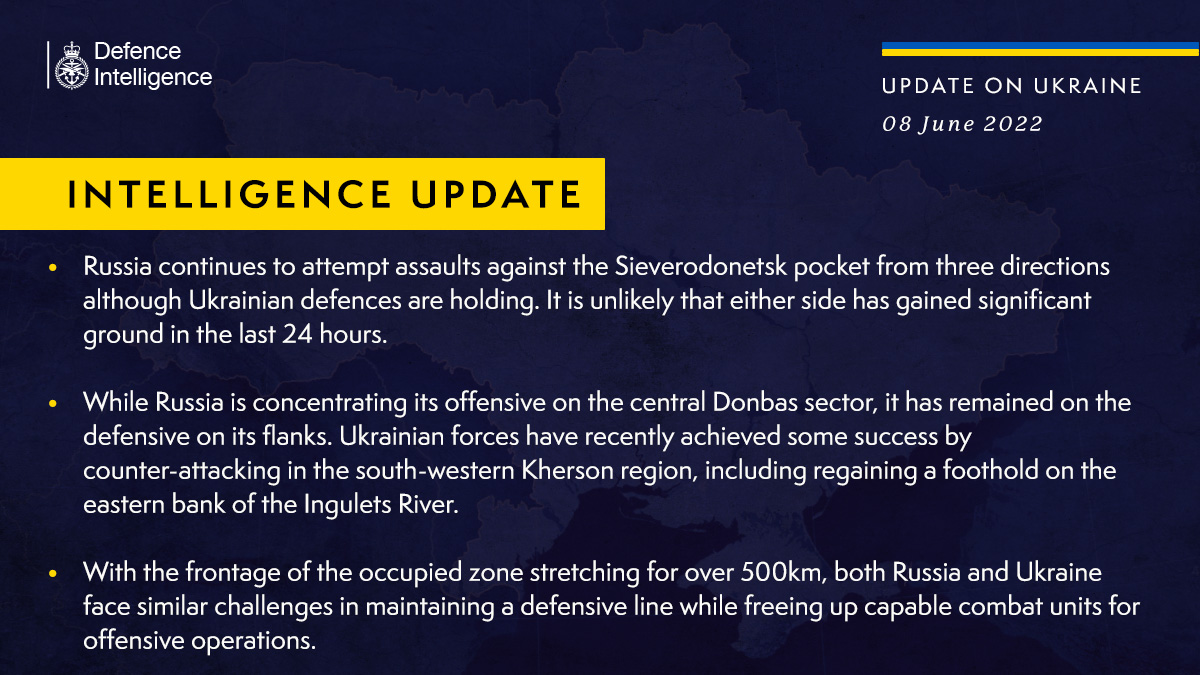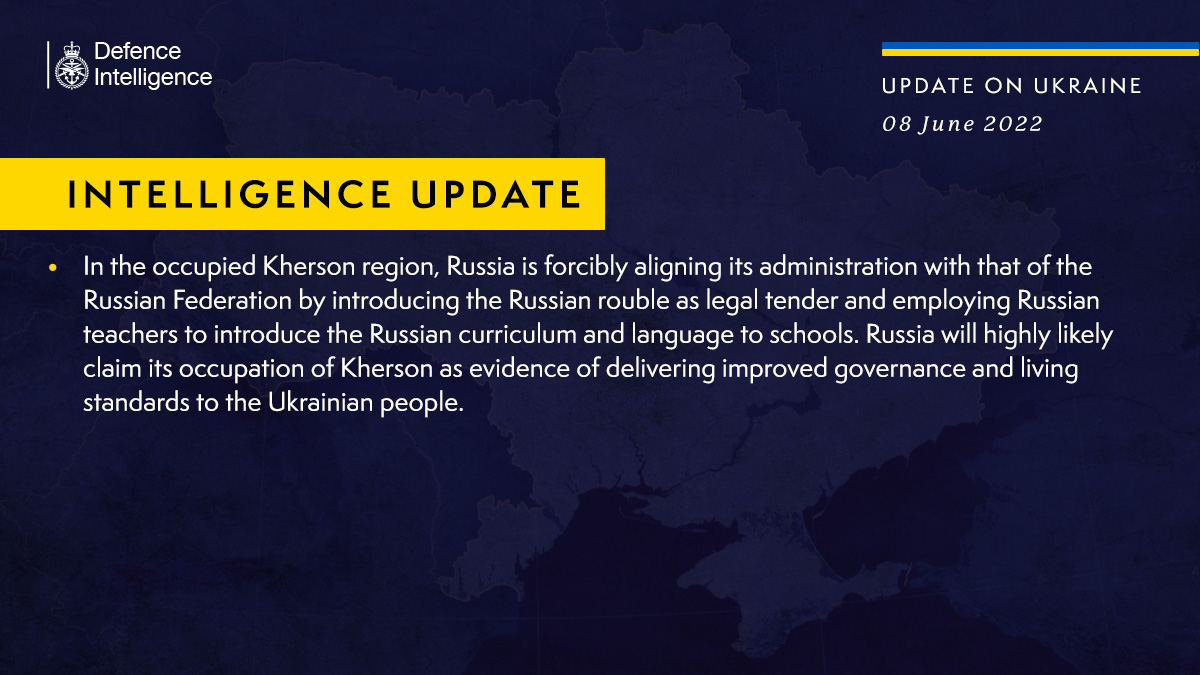
Latest Defence Intelligence update on the situation in Ukraine - 12 June 2022
Find out more about the UK government's response: ow.ly/j8nj50JvswX
🇺🇦 #StandWithUkraine 🇺🇦
Find out more about the UK government's response: ow.ly/j8nj50JvswX
🇺🇦 #StandWithUkraine 🇺🇦
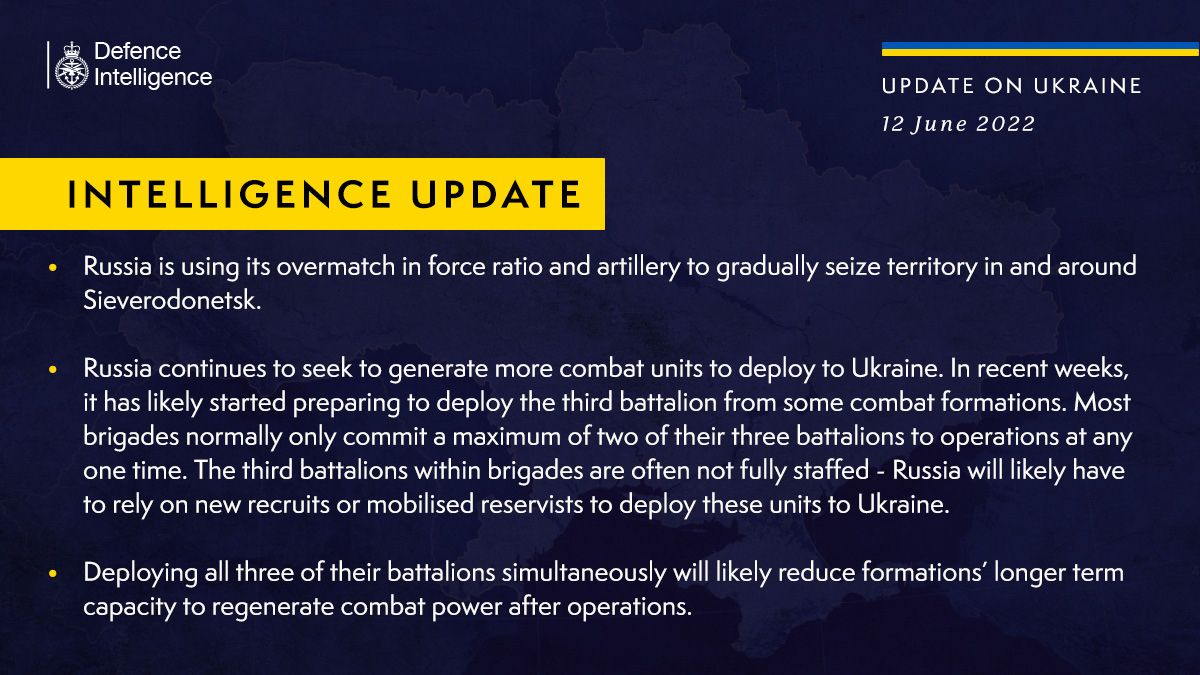
(1 of 5)
Russia is using its overmatch in force ratio and artillery to gradually seize territory in and around Sieverodonetsk.
Russia is using its overmatch in force ratio and artillery to gradually seize territory in and around Sieverodonetsk.
(2 of 5)
Russia continues to seek to generate more combat units to deploy to Ukraine. In recent weeks, it has likely started preparing to deploy the third battalion from some combat formations.
Russia continues to seek to generate more combat units to deploy to Ukraine. In recent weeks, it has likely started preparing to deploy the third battalion from some combat formations.
(3 of 5)
Most brigades normally only commit a maximum of two of their three battalions to operations at any one time.
Most brigades normally only commit a maximum of two of their three battalions to operations at any one time.
(4 of 5)
The third battalions within brigades are often not fully staffed - Russia will likely have to rely on new recruits or mobilised reservists to deploy these units to Ukraine.
The third battalions within brigades are often not fully staffed - Russia will likely have to rely on new recruits or mobilised reservists to deploy these units to Ukraine.
(5 of 5)
Deploying all three of their battalions simultaneously will likely reduce formations’ longer term capacity to regenerate combat power after operations.
Deploying all three of their battalions simultaneously will likely reduce formations’ longer term capacity to regenerate combat power after operations.
• • •
Missing some Tweet in this thread? You can try to
force a refresh


